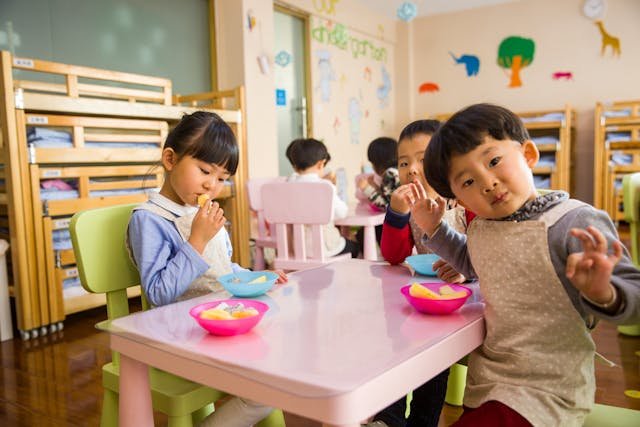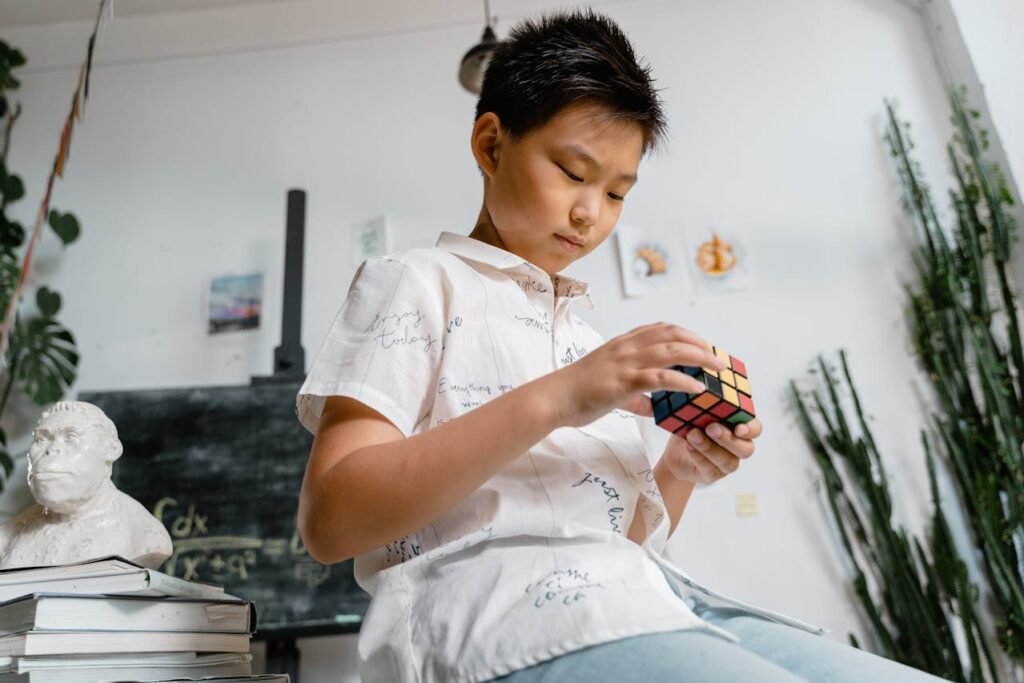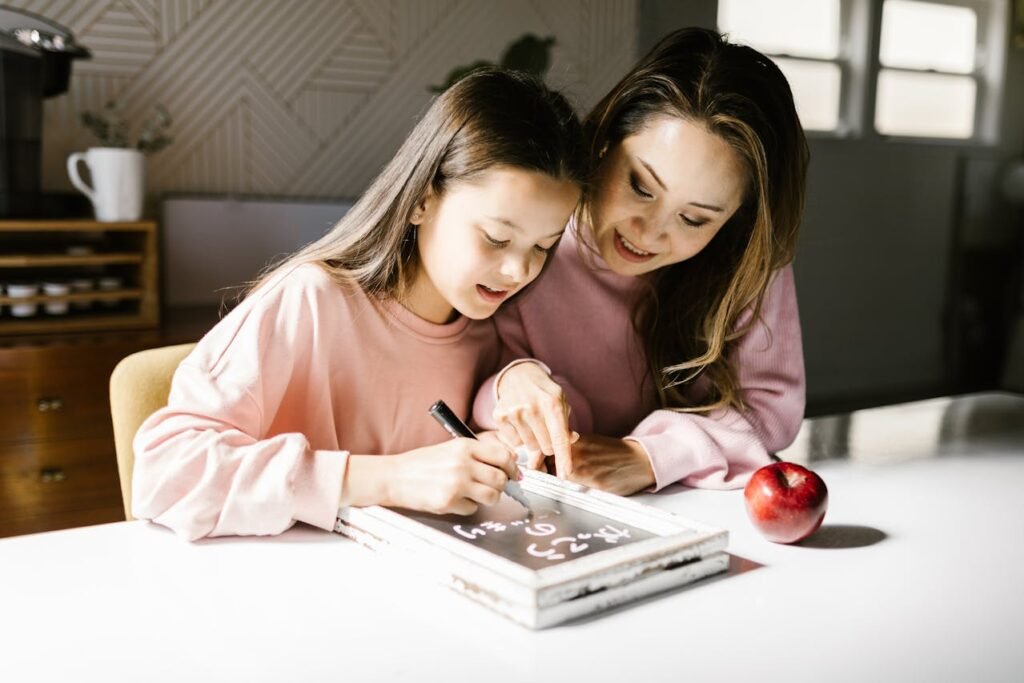Have you ever watched a child switch from one language to another with ease? One moment they’re speaking English, and the next they’re chatting in Spanish, Hindi, or French — without even pausing to think. To adults, it looks like magic. But inside that child’s brain, something remarkable is happening.
Being bilingual is more than just knowing extra words. It actually changes how the brain works. It shapes memory, focus, problem-solving, and even creativity. Scientists now know that children who grow up with two languages often have unique advantages in learning and thinking.
At Debsie, we see this every day. Many of our students speak more than one language at home, and we watch how it strengthens their confidence and sharpens their learning. Parents often ask us: “How exactly does speaking two languages affect the brain?”
How the Bilingual Brain Works Differently
When a child speaks two languages, their brain works a little harder — but also a lot smarter. Imagine the brain like a busy train station. For a bilingual child, there are two sets of trains (languages) running on the same tracks. Each time the child speaks, listens, or thinks, the brain decides which train to let through.
This switching doesn’t just build language skills. It strengthens the very systems that control focus, attention, and decision-making.
The Brain Learns to Switch Fast
Every time a bilingual child chooses one word over another, their brain is practicing control. If they want to say “dog,” their mind quickly pushes aside “perro,” “chien,” or another word for dog in the second language. This constant practice of switching languages makes the brain’s control system stronger.
This is why bilingual kids often do better in activities that require focus. Their brains are used to ignoring distractions and choosing the right path.
Two Language Systems, One Stronger Memory
Being bilingual also gives the brain a workout in memory. To keep two languages active, the brain needs to remember not only words but also grammar, sounds, and meanings. This constant juggling strengthens working memory — the skill that helps children hold information in their mind while using it.
For example, when solving a math word problem, a child with strong working memory can remember all the steps while still focusing on the numbers. Bilingualism gives their brain regular training in this exact skill.
Focus That Goes Beyond Language
Many parents notice that bilingual children seem more attentive during tasks like puzzles, games, or schoolwork. This is not an accident. Switching between languages builds the brain’s “attention muscle.” Children learn how to stay focused on what matters, even when other information is floating around.
At Debsie, we’ve seen this play out in real classes. A bilingual child may quickly shift from speaking in English during math class to using their home language when explaining the problem to their parents. This quick shift builds mental flexibility, which makes problem-solving smoother and less stressful.
Thinking in Two Worlds
Language isn’t just about words — it’s about culture, ideas, and perspective. When a child learns two languages, they also learn to see the world from two different angles. For example, one language might have words for feelings or experiences that the other doesn’t. This helps bilingual children become more empathetic, creative, and open-minded.
Their brain isn’t limited to one way of seeing things. It’s trained to understand that there are always different viewpoints — and that makes them stronger thinkers.
How Bilingualism Boosts Problem-Solving, Creativity, and School Success
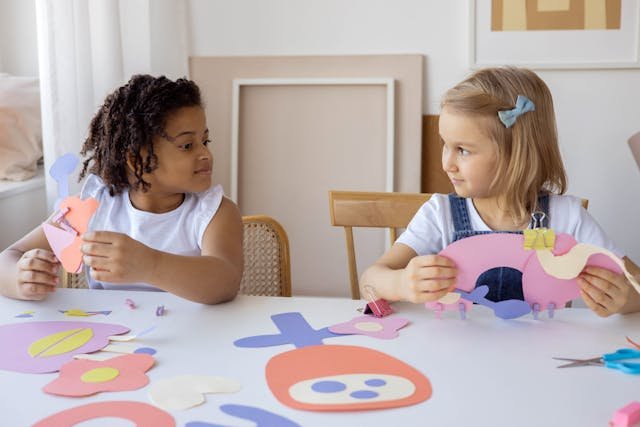
Bilingual children don’t just know more words. Their brains are constantly practicing how to think in flexible, powerful ways. This flexibility spills into many other areas of learning — from solving math puzzles to writing creative stories.
Problem-Solving Becomes Second Nature
When a child speaks two languages, their brain gets used to choosing between options. This constant choice-making trains them to handle problems with more ease.
For example, imagine a child is faced with a tricky science experiment. A monolingual child may try the first solution they think of and get stuck. A bilingual child, however, is already used to switching strategies in their mind. If one approach doesn’t work, they’re more likely to try another. This is because their brain is wired to stay flexible.
In short, bilingualism teaches children that there’s always more than one way to solve a problem.
Creativity Gets a Natural Boost
Being bilingual also strengthens creativity. Switching between languages is like switching between lenses. It allows the brain to make new connections and come up with fresh ideas.
For instance, some languages use words that don’t have direct translations. A bilingual child who knows these words may see or describe a situation in a way others can’t. This “mental stretching” encourages imaginative thinking, which shows up in art, storytelling, and even inventing new ideas.
At Debsie, we see this in our creative writing classes. Bilingual students often use rich details, surprising phrases, or playful twists in their stories. Their minds are trained to think outside the box because they’re used to juggling two ways of speaking.
School Success Beyond Language
The benefits of bilingualism go far beyond speaking or writing. Because bilingual children build stronger memory, focus, and flexibility, they often perform better in school tasks across subjects.
In math, they can hold multiple steps in mind and apply them in order. In science, they’re curious and confident about testing ideas. In reading, they’re better at understanding meaning, since they’ve already learned to see words as symbols that can shift between languages.
Even in social studies or history, bilingual children may connect more deeply with ideas about culture and perspective. They know from experience that there’s more than one way to see the world.
Confidence That Grows With Every Word
Speaking two languages also builds confidence. Children feel proud that they can move between two systems of communication. This pride often makes them more willing to try new challenges, whether in class discussions, group projects, or extracurricular activities.
And when children believe in themselves, their brains are more open to learning. Confidence is not just a feeling — it’s fuel for deeper thinking and greater success.
Bilingualism Strengthens Social Skills and Empathy
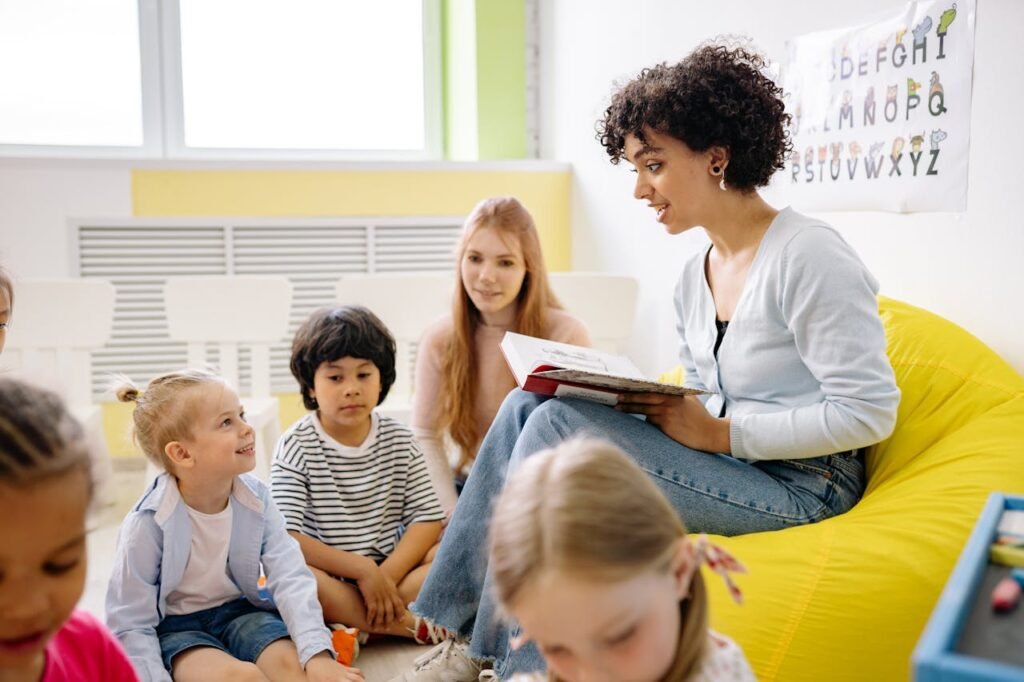
Speaking two languages does more than train the brain. It also shapes the heart. Children who grow up bilingual often develop stronger social awareness, empathy, and cultural understanding. These aren’t just “nice extras.” They’re essential skills for thriving in school, friendships, and life.
Understanding Different Perspectives
Every language carries its own way of seeing the world. A word in one language may not exist in another. A phrase may carry emotions that don’t quite translate. When bilingual children move between these worlds, they naturally learn that people think and feel differently.
This ability to step into another person’s perspective builds empathy. A bilingual child is more likely to pause and consider how someone else might see a situation, simply because their brain is already trained to switch views.
Building Bridges Between People
Bilingual kids often serve as natural bridge-builders. They may help family members translate, explain cultural traditions to friends, or connect classmates who speak different languages. These moments teach responsibility, leadership, and the joy of helping others.
This skill is especially powerful in group projects at school. While some children struggle to work together, bilingual kids are often skilled at adjusting their communication style to make sure everyone feels included.
Cultural Awareness From an Early Age
Language is deeply tied to culture. A bilingual child who speaks two languages usually grows up hearing different songs, stories, and traditions. They learn early on that the world is full of diversity.
Instead of seeing differences as strange, they see them as normal — and even exciting. This mindset makes them more open to new ideas, friendships, and opportunities as they grow.
At Debsie, we’ve seen how this openness enriches classroom discussions. Bilingual students often bring unique examples and ideas, helping all children appreciate different perspectives.
Stronger Emotional Intelligence
Bilingual children also develop stronger emotional intelligence — the ability to understand and manage feelings. When they translate or switch between languages, they often notice subtle differences in tone, expression, and meaning. This makes them more sensitive to emotions in themselves and in others.
For example, they may recognize when a classmate feels left out or when a friend is upset, even without words. This awareness is a powerful tool for building healthy relationships.
Long-Term Benefits of Bilingualism: From Adolescence to Adulthood
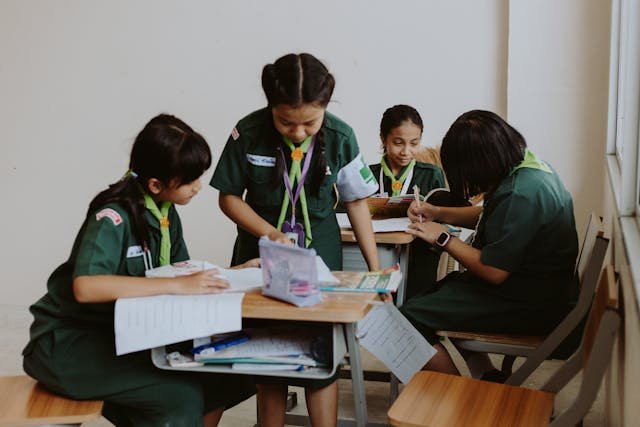
The advantages of bilingualism don’t fade as children grow older. In fact, they often become stronger. By the time bilingual children reach their teenage years, the skills they’ve built through speaking two languages begin to show up in powerful ways — in academics, in friendships, and even in future career opportunities.
Academic Growth in the Teenage Years
By adolescence, bilingual students often show higher levels of focus and critical thinking. Their ability to switch between languages translates into sharper mental flexibility. They can handle complex assignments that require analyzing, comparing, and debating ideas.
In subjects like literature, history, and philosophy, bilingual teens often notice deeper connections because they’re used to seeing ideas from more than one perspective. In math and science, their strong working memory and attention help them manage multi-step problems with confidence.
Confidence in Communication
As teenagers, bilingual children often become more confident in expressing themselves. They can shift their communication style depending on who they’re speaking to, which helps in school presentations, debates, and group projects.
This communication confidence also carries into social life. Teens who are bilingual often feel more comfortable meeting new people, traveling, or engaging with different communities. These experiences expand their world and make them more adaptable.
Preparing for the Global Future
The world is becoming more connected every day. Speaking two languages is not just a personal advantage — it’s a professional one. Bilingual adults often have more career opportunities, especially in fields like business, education, technology, diplomacy, and healthcare.
Even in everyday life, being bilingual makes travel easier, friendships richer, and learning smoother. It allows adults to feel at home in more than one place, to understand more than one culture, and to connect with more than one community.
A Brain That Stays Stronger for Longer
Perhaps one of the most fascinating discoveries about bilingualism is its impact on long-term brain health. Studies suggest that adults who are bilingual may have better memory and mental flexibility as they age. Some research even shows that bilingualism can delay the effects of age-related memory decline.
In other words, the mental workout of speaking two languages doesn’t just help in childhood. It keeps the brain sharp for life.
Building Lifelong Resilience
Finally, bilingualism builds resilience. Children who learn to navigate two languages grow up knowing that challenges can be managed, mistakes can be fixed, and flexibility is a strength. These lessons prepare them not just for school, but for the unpredictable challenges of adulthood.
How Parents Can Support Bilingualism at Home
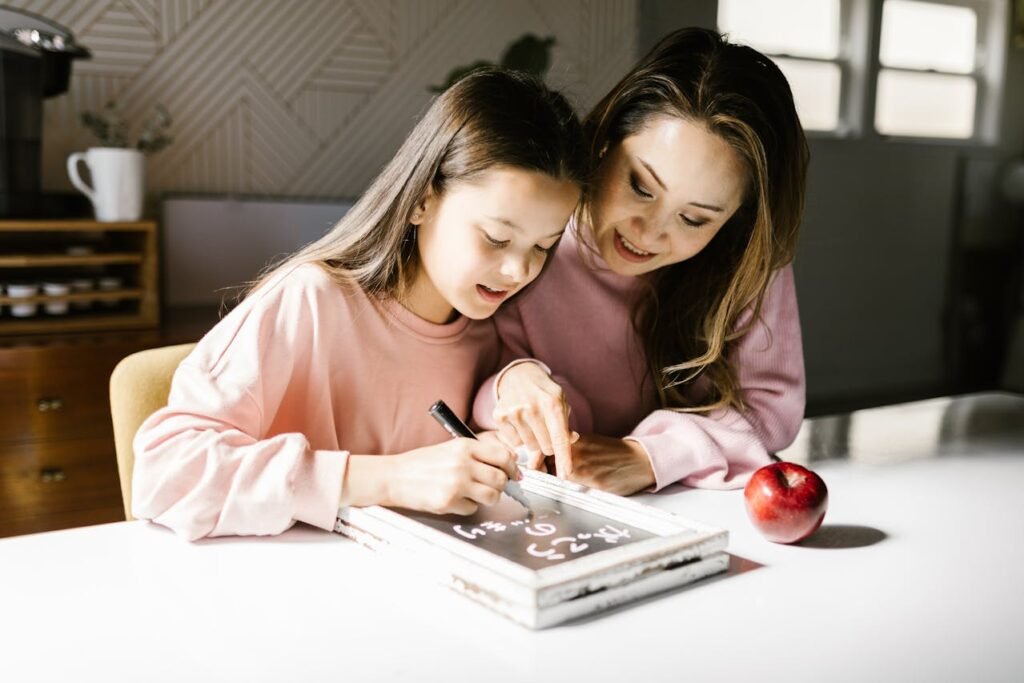
Raising a bilingual child doesn’t require fancy tools or strict rules. What it really takes is consistency, patience, and joy. Children learn languages best when they feel connected to them — when the words are part of everyday life, culture, and love. Parents play the most important role in making this happen.
Make Both Languages a Natural Part of Daily Life
Children learn languages best through repetition and context. Using both languages at home in natural situations — meals, bedtime, playtime — helps words stick. For example, one parent might consistently speak one language while the other uses another. Or families may use one language inside the home and another in public.
The key is consistency. Children thrive when they know which language to expect in different settings. Over time, switching becomes natural.
Connect Language to Culture and Stories
Language is more than vocabulary. It carries traditions, songs, stories, and values. Reading bedtime stories in both languages, singing cultural songs, or cooking family recipes together strengthens not just vocabulary but also emotional connection.
When children feel proud of their culture, they feel proud of their language. This pride motivates them to keep using both languages, even when it feels easier to just stick to one.
Encourage Speaking, Not Just Listening
It’s easy for children to understand a second language but harder to speak it with confidence. Parents can encourage speaking by asking simple questions, playing role-play games, or letting children explain their day in both languages. The more opportunities they have to practice speaking, the stronger their skills will grow.
Small corrections can be made gently, but the main goal should be to build confidence. Children need to feel safe experimenting with words, even if they’re not perfect.
Use Technology and Learning Platforms Wisely
In today’s world, technology can also support bilingual learning. Watching educational videos, listening to music, or using apps in the second language helps reinforce skills. At Debsie, our teachers often encourage children to practice in both languages when possible, using fun, interactive methods that make learning exciting.
What matters most is balance. Technology should be a tool, not a replacement for real conversations. Nothing is more powerful than hearing and using the language with family and friends.
Patience Is the Secret Ingredient
Some children mix languages at first, using words from both in the same sentence. This is perfectly normal and actually a sign of strong learning. Over time, their brains learn when and how to separate the two. Parents who stay patient and encouraging help children develop stronger skills without stress.
Common Challenges of Raising Bilingual Kids — And How to Overcome Them
While raising a bilingual child comes with lifelong benefits, parents sometimes feel unsure along the way. They wonder if their child is confused, if speaking two languages will slow them down, or if one language will be lost over time. These concerns are very common — but the truth is, most challenges are temporary and can be solved with consistency and patience.
Challenge 1: Mixing Languages in the Same Sentence
Parents often worry when their child says something like, “Can I have más juice?” or “I want to jouer outside.” This blending of languages is called code-switching, and it’s not a sign of confusion. In fact, it shows that the child’s brain is working hard to manage both systems at once.
How to overcome it: Instead of correcting harshly, model the correct sentence in one language. For example, if your child says, “I want agua,” you can reply, “Oh, you want water. Here’s your water.” Over time, they’ll naturally separate the two languages as their brain matures.
Challenge 2: Preferring One Language Over the Other
It’s very common for children to lean toward the language they hear most often. For example, a child may understand their home language but prefer to answer in English if that’s what they use at school.
How to overcome it: Make the less-used language fun and meaningful. Read bedtime stories in that language, watch cartoons or listen to songs together, or play games that use those words. Children are more motivated when the language is linked to joy and family connection, not just correction.
Challenge 3: Speaking Later Than Monolingual Peers
Some bilingual children take a little longer to begin speaking. Parents may worry that learning two languages is delaying development. In most cases, this is not a real delay. The child is processing two sets of vocabulary and grammar, which takes more time — but the payoff is worth it. Once they start, progress is usually very fast.
How to overcome it: Keep giving your child rich exposure in both languages. Talk to them, sing, describe what you’re doing, and give them chances to respond, even with simple sounds or gestures. If you’re ever concerned, you can check with a speech professional, but in most cases, bilingual children quickly catch up.
Challenge 4: Keeping Both Languages Strong Over Time
As children grow, one language may begin to fade if it’s not used regularly. For example, if school is in English, the home language might slowly weaken.
How to overcome it: Create daily habits that keep both languages alive. Family meals, cultural traditions, weekend conversations with grandparents, or even setting aside one “language day” per week can help. Children need regular practice to keep both languages active, but it doesn’t have to feel like homework — it can feel like life.
At Debsie, we remind parents that these challenges are not barriers. They’re natural steps in the journey of bilingual development. With gentle encouragement, creativity, and patience, children don’t just overcome these challenges — they thrive because of them.
How Debsie Supports Bilingual Kids

At Debsie, we know that bilingual children bring something special into every classroom. Their ability to switch languages, notice patterns, and see the world from different angles gives them unique strengths. Our job is to nurture those strengths and guide them to grow even further.
Our teachers come from many countries and speak many languages themselves. This helps them understand the challenges bilingual children face — like mixing words, hesitating to speak, or switching languages depending on context. Instead of seeing these as problems, we see them as natural stages of brain growth.
Lessons That Encourage Both Languages
In our classes, we welcome bilingualism. If a child explains an idea in one language, we encourage them to try it again in another. This builds confidence and shows them that both languages are valuable. In writing, reading, or even coding, bilingual children often make creative connections, and our teachers give them space to explore these fully.
Building Confidence Through Interaction
One of the most powerful things Debsie does is create a safe space. Many bilingual children feel shy about using their second language, especially if they’re worried about mistakes. In our lessons, mistakes aren’t something to fear. They’re part of learning. Children learn to experiment with words, test new ideas, and build confidence step by step.
Connecting Bilingual Strengths to School Success
Because bilingualism strengthens memory, focus, and problem-solving, Debsie uses activities that let children practice these skills across all subjects. Whether it’s solving a math challenge, writing a creative story, or debating a science question, bilingual children get the chance to use their unique brain skills in ways that make learning exciting and meaningful.
Conclusion: Two Languages, One Stronger Mind
Being bilingual is not just about speaking more words. It’s about shaping a brain that is sharper, more flexible, and more creative. From infancy to adulthood, bilingualism strengthens focus, memory, empathy, and confidence. It opens doors to culture, community, and opportunity.
For parents, supporting bilingualism is one of the greatest gifts you can give. It doesn’t require perfection — just patience, encouragement, and daily practice. Over time, those small moments of speaking, listening, and connecting add up to something extraordinary: a child with a stronger mind and a wider world.
At Debsie, we celebrate bilingual kids every day. We know how special they are, and we design our lessons to help them thrive — in both languages, and in every subject.
👉 Book a free trial class with Debsie today and see how we make learning smarter, deeper, and more joyful for bilingual children.
👉 Explore our full list of courses — from math and science to reading, coding, and music — and discover how we help every child, in every language, reach their full potential.
Because when children grow up bilingual, they don’t just speak differently. They think differently. And that difference is their superpower.
Read Next:
